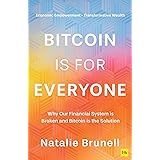Navigating the Labyrinth of Cryptocurrency Exchanges: Your Expert Guide
Imagine this scenario. You are the resident crypto guru among your friends. When the market surges, your phone rings constantly. Everyone asks the same question: “What are the best crypto exchanges?” Your typical reply highlights a crucial truth. There is no single, universal answer. Individual priorities shape the ideal choice. As explored in the insightful video above, selecting the right platform is deeply personal. Different traders demand different functionalities. This guide expands upon the video’s crucial insights. It delves deeper into market offerings. It helps solidify your understanding of leading platforms.
Understanding Your Trading Needs
The cryptocurrency landscape boasts myriad exchanges. Each platform offers unique features. Some prioritize ease of use. Others focus on advanced trading tools. Your individual trading style is important. Your risk tolerance also plays a role. These factors influence your optimal exchange choice. The goal is to align platform capabilities with your specific requirements.
Consider the regulatory environment. This impacts available services. Geographical restrictions often apply. Security protocols also vary widely. Understanding these nuances is critical. It helps in making an informed decision. This proactive approach safeguards your assets.
Coinbase Pro: A Gateway for Fiat On-Ramps
Platform Overview
Coinbase Pro is known as an advanced trading platform. It is operated by Coinbase, a significant player. The company was founded in 2013. It is based in San Francisco. A large user base exists. They number over 35 million individuals. Transaction volumes reach $220 billion. This indicates its established market presence. Coinbase was recently valued at $8 billion. This followed a $300 million funding round.
Access is wide-ranging. Coinbase Pro is accepted in over 100 countries. US residents can use it. Hawaii is the sole exception. Account creation is straightforward. First, a regular Coinbase account is needed. This then grants access to Coinbase Pro. The login credentials remain identical.
Features and Functionality
The trading interface is user-friendly. Market and limit orders are supported. Stop orders are also available. These options suit various trading strategies. Leverage trading up to 3x is offered. However, caution is advised here. New users are often urged to avoid leverage. It can lead to substantial losses. This is particularly true in volatile markets.
Deposit methods vary by country. Major options are widely supported. These include bank transfers and PayPal. Debit and credit cards are also accepted. ACH and SWIFT deposits are free. USD wires incur a $10 fee. SEPA EUR deposits cost only 15 cents. These fee structures are transparent.
Fees and Cryptocurrency Support
Withdrawal fees are also specified. ACH withdrawals are free. USD wires cost $25. SEPA transfers are 15 cents. SWIFT withdrawals are £1. Importantly, crypto withdrawals are free. Trading fees typically start at 0.5%. This applies to monthly volumes under $10,000. Fees scale down with increased volume. Approximately 40 cryptocurrencies are available. This offers a decent selection for traders.
Customer Support and Security Protocols
Customer support is available via ticket submission. Email responses are provided. Wait times can be extensive. This has been noted by many users. Phone support exists from 6 AM to 6 PM PT. However, account-specific queries are not handled. This limitation can be frustrating. Security is a strong point. 98% of user funds are held offline. Private keys are encrypted and backed up. These backups are stored globally. FDIC insurance covers US dollar balances. This protects up to $250,000. Two-factor authentication secures individual accounts.
A significant drawback is frequent outages. These occur during high volatility. Such events can prevent trades. This impacts potential profits. Mobile apps are available for iOS and Android. Third-party trading bots generally support Coinbase Pro. This enhances automated trading options. Coinbase Pro is best for crypto newcomers. It is suitable for those using fiat currencies. However, higher fees and support issues exist.
Uniswap: The Power of Decentralization
Decentralized Exchange Mechanism
Uniswap operates as a decentralized exchange (DEX). It functions as an open-source DApp. This DApp is built on Ethereum. Users can swap ETH for ERC20 tokens. This process is truly decentralized. No central entity holds funds. Control of assets remains with the user. This non-custodial model offers significant security. It avoids risks associated with centralized hacks. Think of past incidents like Mt. Gox or QuadrigaCX. These demonstrate the importance of self-custody.
Its decentralized nature means no country restrictions. This broadens accessibility. Uniswap saw significant growth in 2021. It reported higher trading volumes than Coinbase in September. This shift highlights DEX market maturity.
Unique Features and Fee Structure
Liquidity pools are core to Uniswap. They are pools of tokens. These sit in smart contracts. They enable trading and fee earning. There is no KYC requirement. Privacy-conscious traders value this. No deposit or withdrawal fees exist. Users instead pay Ethereum gas fees. A 0.3% liquidity provider fee is charged. This occurs for each token swap. Gas fees can fluctuate wildly. High network congestion increases costs. A single swap once cost $55 in gas fees. Users must monitor these fees carefully.
Supported Assets and Considerations
Uniswap is an ERC20 crypto-to-crypto exchange. Fiat deposits are not supported. Users need existing ETH or ERC20 tokens. Hundreds of ERC20 tokens are listed. However, non-Ethereum cryptocurrencies are unavailable. Customer support is community-driven. The Uniswap Discord group is the primary channel. A dedicated mobile app is absent. Yet, the app is mobile browser-optimized. It connects with mobile wallets easily.
Security concerns revolve around smart contracts. Bugs can potentially exist. No major incidents have been reported. Uniswap suits experienced crypto users. It appeals to those prioritizing private key control. Privacy hawks also find value. The limited asset support can be a drawback. High gas fees also present a challenge.
Binance: The Global Powerhouse
Global Reach and Extensive Features
Binance is recognized as the world’s largest exchange. It processes approximately $2 billion in daily volume. Various regional versions exist. These include Binance US and Binance Singapore. Binance.com serves as the global platform. US residents must use Binance US. Countries under US sanctions are blocked. This includes Iran and North Korea.
Binance offers an extensive crypto spot market. Advanced trading tools are provided. Margin trading is available. An OTC service ensures better pricing. Advanced derivative products are also featured. These include futures with 125x leverage. Leveraged tokens offer 3x leverage. Binance Earn provides interest rates on crypto. A Binance crypto card gives up to 8% cashback. Collateralized crypto loans are also accessible. Initial Exchange Offerings (IEOs) are available. These launch via Binance Launchpad. Imagine earning passive income or accessing early projects.
Competitive Fees and Cryptocurrency Spectrum
Crypto deposits are free. Withdrawal fees vary by asset. Binance boasts some of the lowest trading fees. Maker and taker fees start at 0.1%. Paying with BNB coin grants a 25% discount. Higher trading volumes receive further discounts. Visa and Mastercard deposits are recent additions. Bank transfers are also supported. Card fees for EUR and GBP are 1.8%. UK Faster Payments and SEPA deposits are free. Binance is an “altcoin buffet.” Most cryptocurrencies are listed. This offers vast trading opportunities.
Support, Security, and Target Audience
Customer support is 24/7. An online ticket system is used. Email responses typically arrive within 24 hours. Excellent mobile apps exist. These are for Android and iOS. Desktop apps are also available. These support macOS, Windows, and Linux. Security adheres to best practices. Cold storage and multi-signature wallets are used. Tiered access enhances protection. Binance was hacked in 2019. About 7,000 Bitcoin were stolen. This was roughly 2% of holdings. All affected users were reimbursed. This was achieved via the SAFU fund. Most major trading bots support Binance. This facilitates automated strategies.
Binance is ideal for altcoin dabblers. It suits those seeking diverse features. Its vast array of services attracts many. However, regional restrictions must be considered. The 2019 hack, while reimbursed, reminds users of inherent risks.
FTX: A Haven for Advanced Traders
Origins and Investor Confidence
FTX was established in May 2019. It is registered in Antigua and Barbuda. Offices are located in Hong Kong. FTX raised $8 million in funding. Alameda Research incubated the exchange. Alameda trades $1 billion daily. It manages over $100 million in assets. Binance also invested strategically in FTX. These affiliations highlight strong backing. FTX is a serious contender. Its credibility is well-established.
Certain countries are restricted. These include the United States and Cuba. Crimea, Iran, and Syria are also blocked. North Korea and Antigua and Barbuda are excluded. Residents of these regions cannot use FTX.
Innovative Features and Fee Structure
Standard spot markets are offered. Dozens of cryptocurrencies are available. The widest range of perpetual futures is a key feature. Three-times short and long leveraged tokens exist. Volatility tokens are also provided. Unique indexes are noteworthy. The “shitcoin index” allows broad exposure. A DeFi index simplifies diversification. Special tokens, like Trump 2020, enable speculation. Bitcoin options are available for traders. An OTC portal facilitates large block trades. Minimal slippage is a key benefit. FTX truly caters to advanced trading strategies.
Fees are highly competitive. Taker fees start at 0.07%. These scale down with volume. Maker fees were zero for 2020. Holding FTT tokens grants discounts. Up to 60% fee reduction is possible. This makes FTX exceptionally cheap. Crypto deposits and withdrawals are free. A 0.1% fee may apply. This occurs if volumes exceed trade activity. Fiat deposits accept credit cards and wires. All major currencies are supported. Fiat withdrawals under $10,000 incur a $75 fee.
Cryptocurrency Support and Security Measures
Spot market crypto range is moderate. Perpetual futures selection is vast. This includes special futures products. Email support is available. User experiences are not widely reported. Security relies on cold storage protocols. Two-factor authentication is standard. IP address whitelisting is also offered. An insurance fund protects users. This fund is for liquidation failures. It holds $2 million and 5 million FTT tokens. This provides a decent buffer. FTX is best for experienced traders. It suits those utilizing exotic instruments. Perpetual futures and leveraged tokens are its strengths.
The specific fee structure benefits active traders. High withdrawal fees for fiat balances are a consideration. Its specialized offerings make it less suitable for beginners. FTX represents a cutting-edge platform. It serves sophisticated market participants.
Beyond the Exchange: Secure Your Holdings
The video above emphasized a critical point. No matter how secure, exchanges hold risk. Large crypto holdings should not stay on exchanges. This applies unless actively trading. A hardware wallet offers maximum security. It provides self-custody. “Not your keys, not your crypto” remains true. This old adage still holds immense weight. Always prioritize asset control. Diversify your security strategy. These practices minimize potential losses. Consider these insights for the best crypto exchanges decision.







